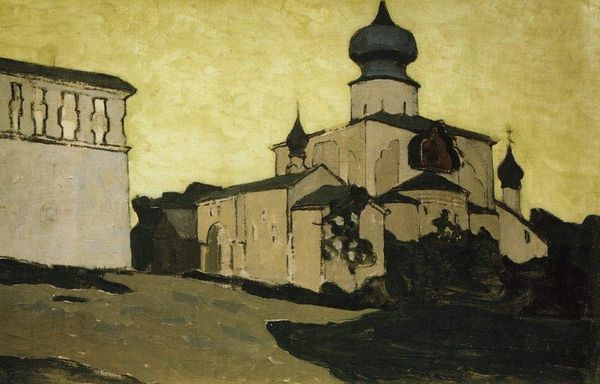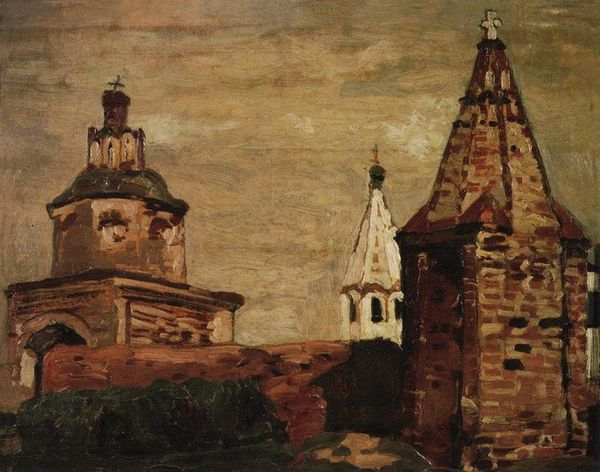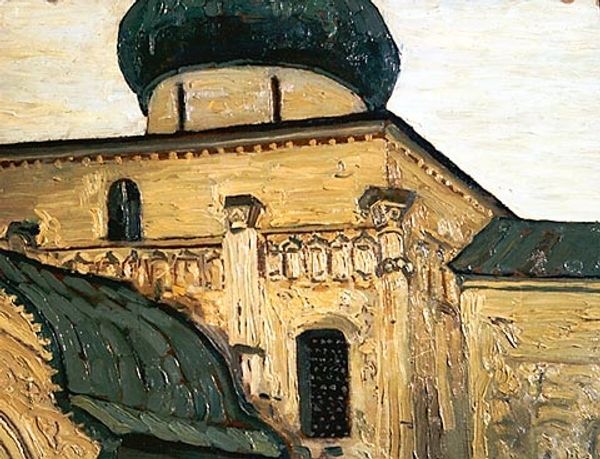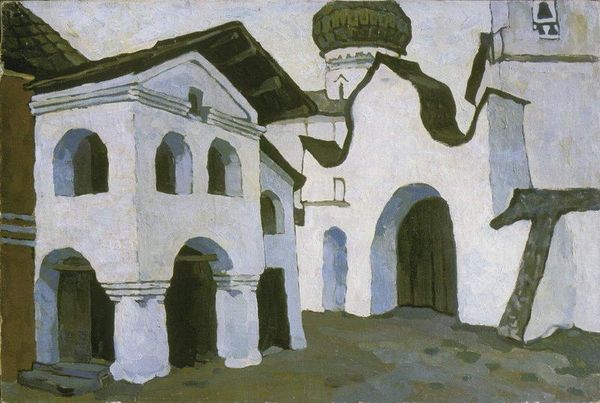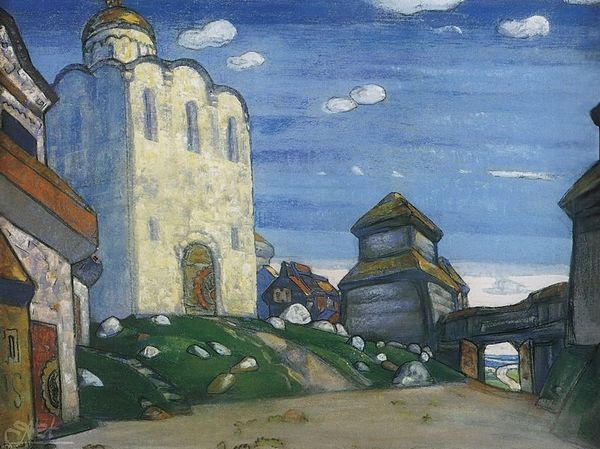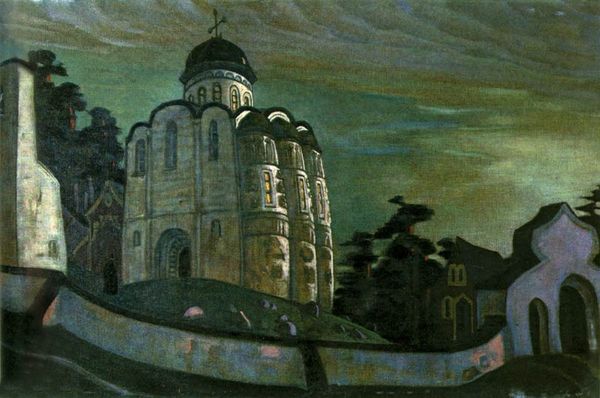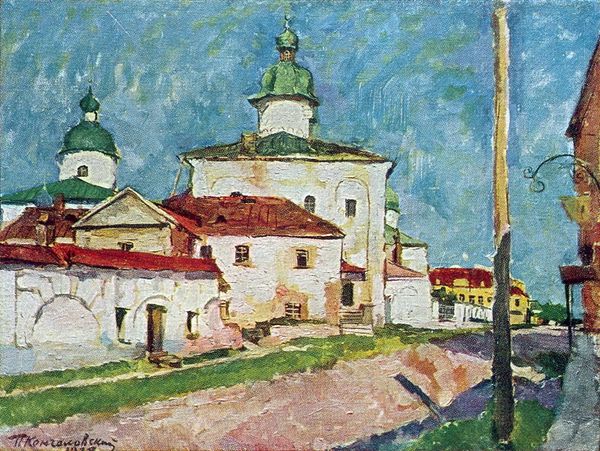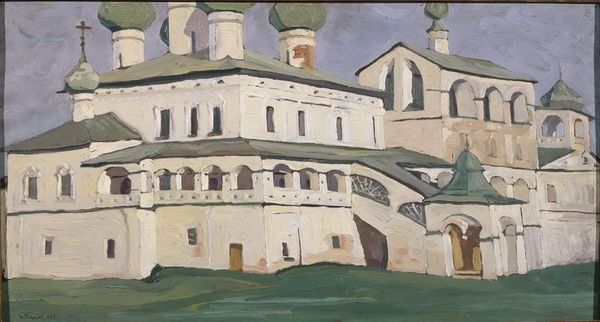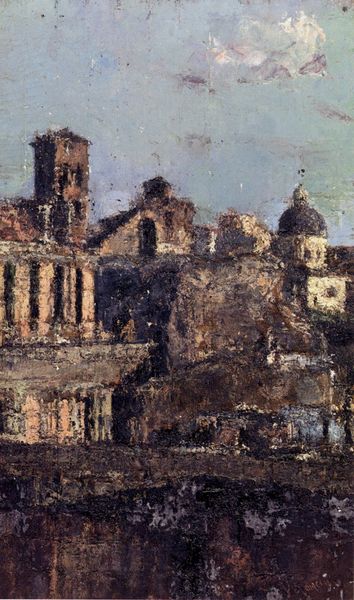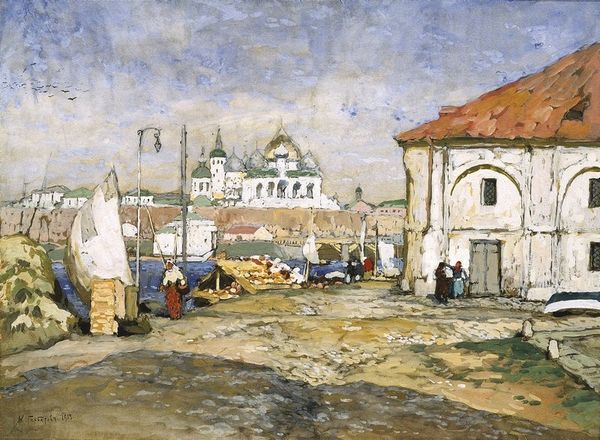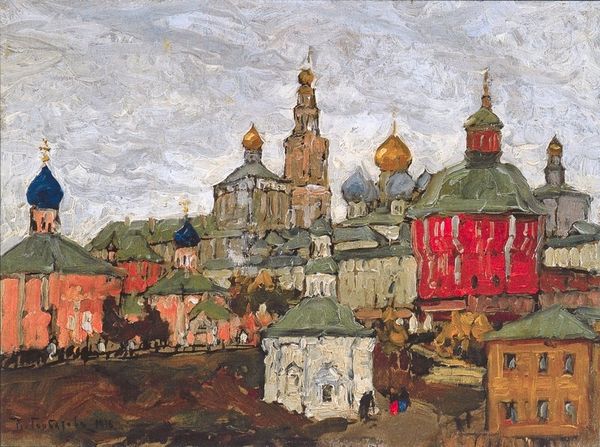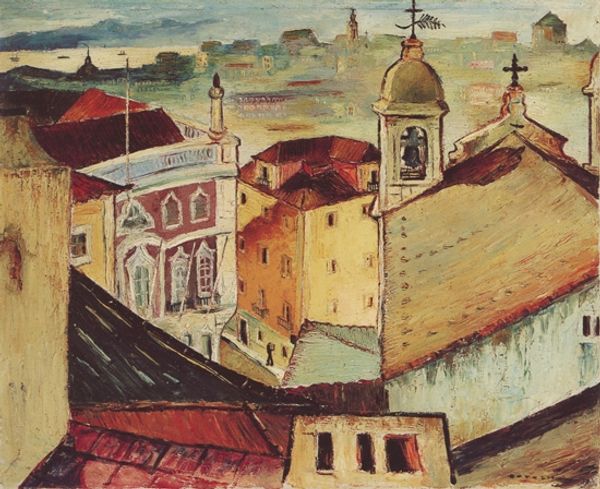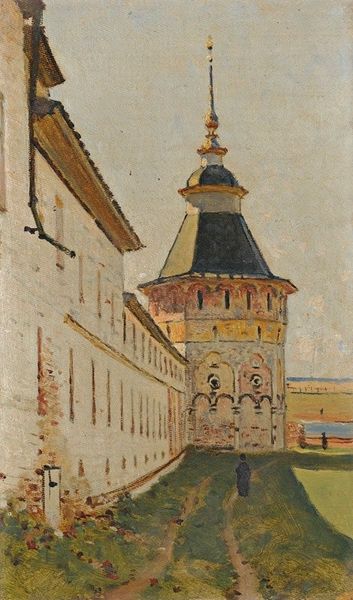
painting, oil-paint, architecture
#
painting
#
oil-paint
#
landscape
#
oil painting
#
russian-avant-garde
#
cityscape
#
architecture
Copyright: Public domain
Curator: Welcome to this examination of Nicholas Roerich’s "Yaroslavl. Church of Nativity", painted in 1903. What's your initial take? Editor: Dreary. But in a way that makes me lean in. It's overcast, almost bleak, yet those architectural forms command attention. I am curious about the experience of sacred spaces within communities weathering sociopolitical storms. Curator: Yes, the somber palette is quite striking. Notice how Roerich has reduced the church to geometric volumes. See the stark contrast between the dark domes and the pale walls? The composition feels deliberately flattened. This emphasizes the architectural planes themselves, beyond the specific religious iconography. Editor: Absolutely. I see the architecture also representing resistance, a physical manifestation of endurance amidst changing power dynamics of early 20th century Russia. Considering the sociopolitical climate—with burgeoning revolutionary movements—how might this image engage with notions of institutional power versus localized faith? Curator: The symbolism may lie precisely in that tension you identify. The starkness could signify a shedding of excess ornamentation to reveal essential structure. It’s Roerich's way of dissecting form to lay bare the architectural skeleton. I would argue this represents a simplification, but a focus on essential, rather than symbolic, forms. Editor: Yet can a church, by its very nature, exist without symbolic function? Roerich, even in simplifying, captures its imposed power and enduring presence, especially given the specificities of location within a conflicted social sphere. I wonder how the citizens of Yaroslavl negotiated the spaces. Were the parishioners experiencing that imposed power? Curator: An intriguing question to consider. His deliberate abstraction also seems in conversation with nascent avant-garde sensibilities emerging throughout Russia. Editor: Roerich provides a meditation not only on physical structures but also the less tangible constructs that hold communities together, especially during moments of great cultural transition. Curator: An apt observation, bringing depth to our appreciation of its deceptively simple surface. Thank you. Editor: Indeed. It's important to understand art as both an aesthetic and socio-political mirror.
Comments
No comments
Be the first to comment and join the conversation on the ultimate creative platform.
